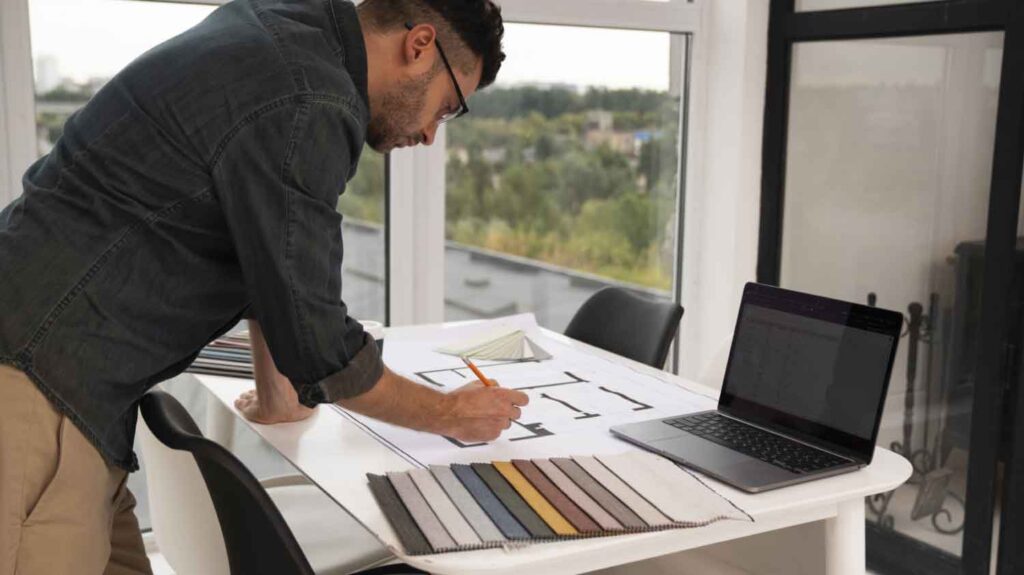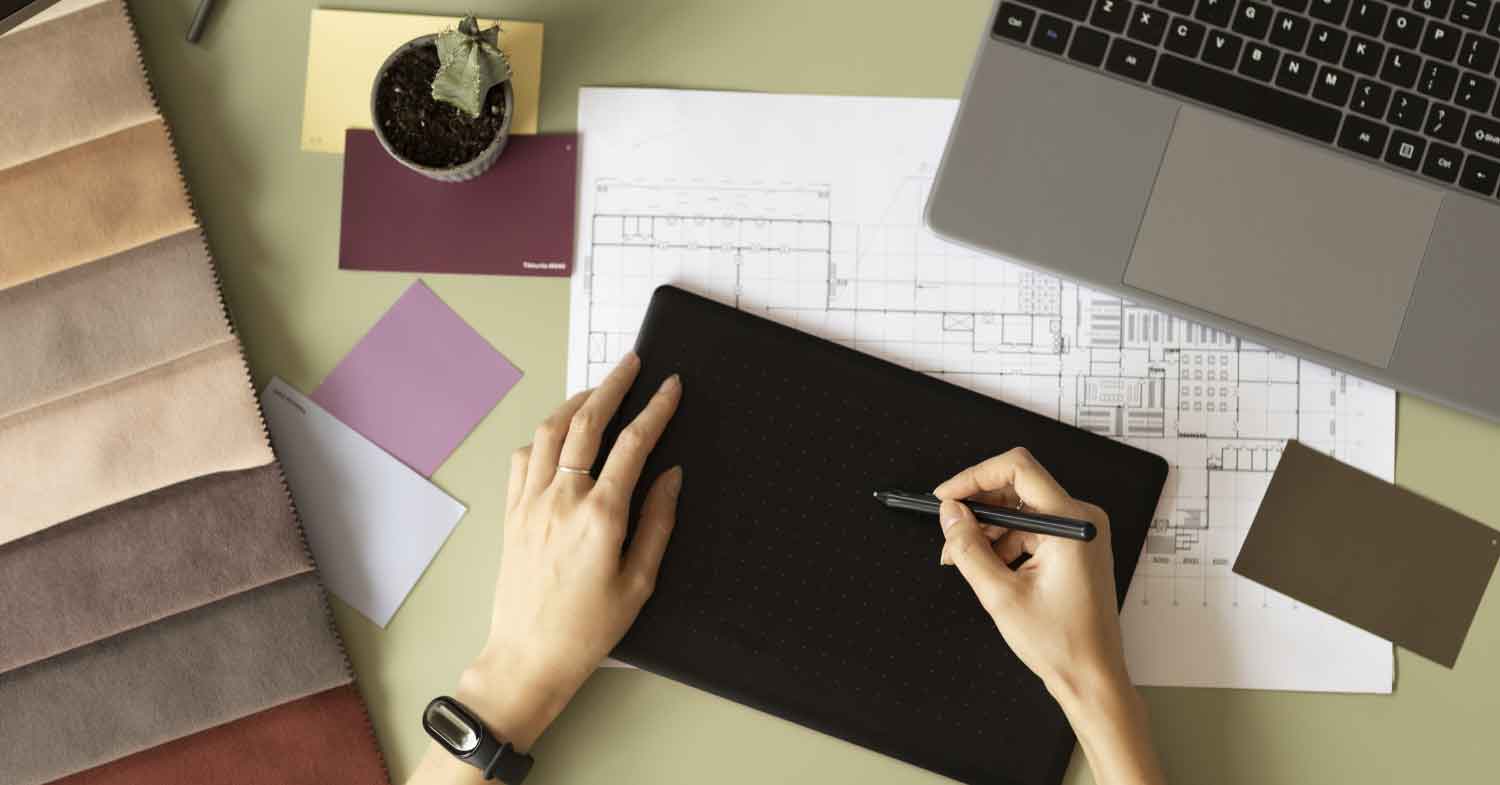Introduction
If you’ve ever walked into a room and instantly imagined how it could look better, you might already have the eye of an interior designer. This creative profession combines art, functionality, and a deep understanding of how spaces can affect people’s moods and lifestyles.
In this guide, we’ll walk you through exactly how to become an interior designer, the skills you need, and even how you can start your journey right after the 12th grade. Whether you want to work for a firm, start your own business, or freelance, this article will give you all the details to begin your career in interior design.
1. Understanding What an Interior Designer Does
Before diving into the “how,” let’s talk about the “what.”
An interior designer’s job is to create beautiful, functional spaces that meet the client’s needs. This can include:
- Planning layouts and floor plans
- Selecting colors, materials, and finishes
- Choosing furniture and décor
- Ensuring designs meet safety and building regulations
- Coordinating with architects, contractors, and suppliers
In short, it’s about making spaces look amazing while keeping them practical.
2. Why Choose Interior Design as a Career?
The demand for interior designers is growing worldwide as people value well-designed homes, offices, and commercial spaces more than ever.
- Creative Freedom – Every project is unique, so you can express your creativity daily.
- High Earning Potential – Skilled designers can earn well, especially with premium clients.
- Flexible Work Options – Choose between freelancing, working in a company, or running your own firm.
If you love creativity, problem-solving, and working with people, interior design could be your perfect fit.

3. How to Become an Interior Designer: The Basic Steps
Here’s the roadmap to get started:
Step 1: Complete Your Education
You don’t need a specific subject in school, but if you’re still in high school and wondering how to become an interior designer after 12th, here’s what to do:
- Choose the right course – Look for diplomas, bachelor’s degrees, or certifications in interior design.
- Popular options include: Bachelor of Interior Design, BA in Interior Architecture, Diploma in Interior Decoration.
- If you’re not ready for a full degree, start with short online courses to build your foundation.
Step 2: Learn Essential Skills
Interior design requires both creative and technical skills:
- Creativity & Aesthetics – Understanding balance, color theory, and visual appeal.
- Technical Knowledge – Learning CAD software, 3D modeling, and design tools.
- Communication – Presenting ideas clearly to clients and teams.
- Project Management – Handling timelines, budgets, and vendor coordination.
Step 3: Build a Portfolio
Your portfolio is your biggest career weapon. It should include:
- Before-and-after photos of your work
- 3D renders and sketches
- Project descriptions explaining your design decisions
Even if you haven’t worked professionally yet, create mock projects or redesign your own room to showcase your skills.
Step 4: Get Practical Experience
Hands-on experience is essential. You can:
- Intern with interior design firms
- Volunteer to redesign spaces for friends, family, or local businesses
- Work under experienced designers to learn client handling and project execution
Step 5: Stay Updated
Trends in interior design change fast. Keep learning through:
- Online courses and webinars
- Interior design blogs and magazines
- Following top designers on Instagram, Pinterest, and YouTube
4. How to Be an Interior Designer Without a Degree
Many successful interior designers started without a formal degree. If you’re passionate and willing to learn:
- Take specialized online courses in design software like AutoCAD, SketchUp, and Photoshop.
- Build a strong portfolio with personal projects.
- Network with architects, real estate agents, and event planners who might refer clients.
While a degree can help, skills and portfolio matter more in this field.
5. Career Paths in Interior Design
Once you know how to be an interior designer, you can explore different niches:
- Residential Design – Homes, apartments, villas.
- Commercial Design – Offices, restaurants, hotels.
- Exhibition & Event Design – Stage setups, fairs, exhibitions.
- Sustainable Design – Eco-friendly interiors.
- Lighting Design – Specializing in ambience and illumination.

6. How to Become an Interior Designer After 12th: Quick Checklist
If you’ve just finished school and want to enter the field immediately:
- Research and join an accredited interior design program.
- Learn design software from day one.
- Start creating sample designs for practice.
- Join design communities online to get feedback.
- Apply for internships to gain real-world experience.
7. Salary Expectations for Interior Designers
Your income depends on your skills, location, and client base:
- Beginners – $500 to $1,500/month (or equivalent in your country)
- Mid-level designers – $2,000 to $4,000/month
- Top designers – $5,000+ per month
Freelancers can earn more by working with multiple clients at once.
8. Tips to Succeed as an Interior Designer
- Keep networking – Most clients come through referrals.
- Listen to clients carefully – Understand their vision before suggesting yours.
- Be organized – Good project management saves time and builds trust.
- Keep evolving – The more unique your style, the more in demand you’ll be.
Conclusion
Now that you know exactly how to become an interior designer, it’s time to take action. Whether you’re starting after 12th grade or shifting careers later in life, interior design is a field where creativity meets opportunity.
Start small, keep learning, and build a portfolio that speaks for itself. Your dream projects could be just one client away.
Create Stunning Designs with FileClub
Access premium templates, images, and 3D models from top platforms — pay only for what you download and save up to 90%. Check plans now


